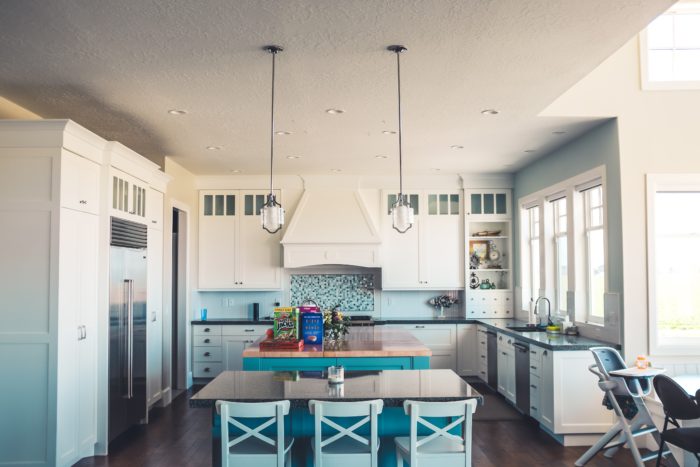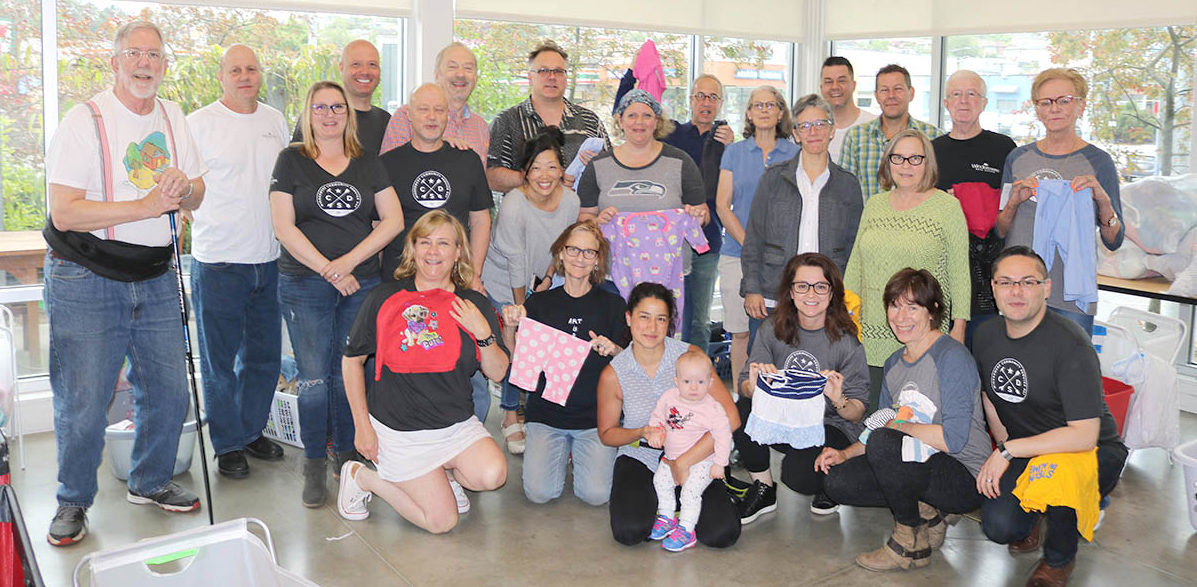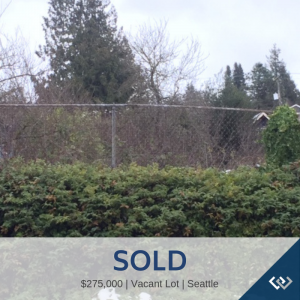Redecorate, Remodel or Move?


There are a number of things that can trigger the decision to remodel or move to a new home. Perhaps you have outgrown your current space, you might be tired of struggling with ancient plumbing or wiring systems, or maybe your home just feels out of date. The question is: Should you stay or should you go? Choosing whether to remodel or move involves looking at a number of factors. Here are some things to consider when making your decision.
Five reasons to move:
1. Your current location just isn’t working.
Unruly neighbors, a miserable commute, or a less-than-desirable school district—these are factors you cannot change. If your current location is detracting from your overall quality of life, it’s time to consider moving. If you’re just ready for a change, that’s a good reason, too. Some people are simply tired of their old homes and want to move on.
2. Your home is already one of the nicest in the neighborhood.
Regardless of the improvements you might make, location largely limits the amount of money you can get for your home when you sell. A general rule of thumb for remodeling is to make sure that you don’t over-improve your home for the neighborhood. If your property is already the most valuable house on the block, additional upgrades usually won’t pay off in return on investment at selling time.
3. There is a good chance you will move soon anyway.
If your likelihood of moving in the next two years is high, remodeling probably isn’t your best choice. There’s no reason to go through the hassle and expense of remodeling and not be able to enjoy it. It may be better to move now to get the house you want.
4. You need to make too many improvements to meet your needs.
This is particularly an issue with growing families. What was cozy for a young couple may be totally inadequate when you add small children. Increasing the space to make your home workable may cost more than moving to another house. In addition, lot size, building codes, and neighborhood covenants may restrict what you can do. Once you’ve outlined the remodeling upgrades that you’d like, a real estate agent can help you determine what kind of home you could buy for the same investment.
5. You don’t like remodeling.
Remodeling is disruptive. It may be the inconvenience of loosing the use of a bathroom for a week, or it can mean moving out altogether for a couple of months. Remodeling also requires making a lot of decisions. You have to be able to visualize new walls and floor plans, decide how large you want windows to be, and where to situate doors. Then there is choosing from hundreds of flooring, countertop, and fixture options. Some people love this. If you’re not one of them, it is probably easier to buy a house that has the features you want already in place.
Five reasons to remodel:
1. You love your neighborhood.
You can walk to the park, you have lots of close friends nearby, and the guy at the espresso stand knows you by name. There are features of a neighborhood, whether it’s tree-lined streets or annual community celebrations, that you just can’t re-create somewhere else. If you love where you live, that’s a good reason to stay.
2. You like your current home’s floor plan.
The general layout of your home either works for you or it doesn’t. If you enjoy the configuration and overall feeling of your current home, there’s a good chance it can be turned into a dream home. The combination of special features you really value, such as morning sun or a special view, may be hard to replicate in a new home.
3. You’ve got a great yard.
Yards in older neighborhoods often have features you cannot find in newer developments, including large lots, mature trees, and established landscaping. Even if you find a new home with a large lot, it takes considerable time and expense to create a fully landscaped yard.
4. You can get exactly the home you want.
Remodeling allows you to create a home tailored exactly to your lifestyle. You have control over the look and feel of everything, from the color of the walls to the finish on the cabinets. Consider also that most people who buy a new home spend up to 30 percent of the value of their new house fixing it up the way they want.
5. It may make better financial sense.
In some cases, remodeling might be cheaper than selling. A contractor can give you an estimate of what it would cost to make the improvements you’re considering. A real estate agent can give you prices of comparable homes with those same features. But remember that while remodeling projects add to the value of your home, most don’t fully recover their costs when you sell.
Remodel or move checklist:
Here are some questions to ask when deciding whether to move or remodel.
1. How much money can you afford to spend?
2. How long do you plan to live in your current home?
3. How do you feel about your current location?
4. Do you like the general floor plan of your current house?
5. Will the remodeling you’re considering offer a good return on investment?
6. Can you get more house for the money in another location that you like?
7. Are you willing to live in your house during a remodeling project?
8. If not, do you have the resources to live elsewhere while you’re remodeling?
If you have questions about whether remodeling or selling is a wise investment, or are looking for an agent, please don’t hesitate to contact me.
Windermere Foundation: Celebrating 30 Years of Giving


Giving back has always been a big part of who we are at Windermere. In the early days of our company, it was pretty simple; we would see a need and help any way we could. But as we grew, we realized we could accomplish much more if we had a common purpose. That’s how the Windermere Foundation was born.
A big idea
We started with an idea that would give every Windermere agent the ability to make a difference. Housing is our business, so helping homeless families seemed like a natural fit. We later expanded that to include low-income families, with an emphasis on helping children.
Every time a home is sold
For the past 30 years, a portion of every Windermere agent’s commission has been donated to the Windermere Foundation. Having 100% participation gives us a common purpose and sends a powerful message about our commitment to the community.
Who we help
Last year alone we provided funding to more than 500 organizations throughout the Western U.S. Homeless shelters, food banks, schools, hospitals, community centers, parks; the list goes on. The main thing that they all have in common is a deep devotion to helping our neighbors in need.
How we help
Our agents have proven time and time again how committed they are to making their communities a better place to live. Their generosity funds backpacks full of food so school kids don’t go hungry on the weekends. They help keep families in their homes by covering housing costs. And their donations make sure the homeless are getting their most basic needs met, and the dignity that goes with it.
Thank you
If at any point during the past 30 years you’ve bought or sold a home using a Windermere agent, you are a part of the Windermere Foundation too, and you’ve helped make a positive difference in your community. And for that, we thank you on behalf of everyone at Windermere.
If you would like to learn more about the Windermere Foundation, please visit windermerefoundation.com.
CASE STUDY: The risks of buying a home next to an empty lot!


My former client Chris has contacted me several times over the years about a vacant lot adjacent to his property, and his concern that a developer would build a mega-mansion or try and divide the lot to build more than one house, despite the single-family zoning restrictions. Since the lot is on the south side of his home, another house would block a lot of natural light.
We had tried to locate the owner of the property on several occasions to see if Chris could buy it, to no avail. Just before the holidays in early December 2018, the lot came on the market and Chris contacted me to see if he could try and buy it. Having been in the neighborhood for 15 years, and raised their two kids in the house, Chris and his wife Polly were very attached to both.
I did some research and quickly realized that the lot was quite over-priced and that the address for the property belonged to the house next door, which the listing agent and her buyer were unaware of.
I immediately contacted the title company to make sure we could get the correct address and had several diplomatic discussions with the listing agent about the property being over-priced. The agent was a part-timer and a friend of the buyer and was just taking their lead in determining price. She told me that the sellers were not that motivated to sell but thought they would just try it out!
So, it was a tricky situation, I really did not want Chris to pay more for this property than it was worth, but it was hard because he and his wife had an investment in preserving their privacy, and they also liked the idea of designing and building a new house on the lot.
In order to justify paying a higher price, I consulted with a fellow agent in my office, Jeff Wolfe who specializes in land division. With his help, we realized that a third house could be built by subdividing part of Chris and Polly’s large lot and adding part of it to the vacant lot, creating two build-able lots.
So, if Chris and Polly changed their minds and decide to move at some point, they could create two build-able lots and make a profit. Jeff was kind enough to meet with us to discuss what steps would need to be taken to see what could be built.
Incidentally, I am so grateful to work in an office where agents are willing to help each other and share expertise, because this is not the norm in the real estate world!
Chris and Polly decided to put in a lower offer, and I provided a long justification for why, using relevant comparable sales, plus lots of information about the slow-down in the housing market and how builders are being more conservative in their offers, given the much higher costs of building materials due to the trade wars, and the uncertainty of the housing market.

We expected a counter which we got, but still felt it was too high, so we tried one more counter and the sellers decided to accept our offer which was $75,000 less than the original list price. Chris had a 30-day feasibility contingency, which he was able to extend to get all the info he needed.
So now Chris and Polly no longer worry about what is happening next door, and I feel that they did not over pay, which makes me happy.
Ready to sell your home? Go here to see what you’ll gain by having me by your side during this complex process. Ready to get started? Contact me today, or go here to learn more about me. Want more information? Check out my Top Secret blog post of FAQs for Sellers.
More Than a Yard: Finding the Right Home for Your Pooch


For many house hunters, a dream home isn’t complete without being a good fit for the family dog. Some might see the fenced in yard, and consider the box checked. However, if you are looking for your next home, you may want to look a little deeper to be sure the fit is right before signing on the dotted line.
It’s worth taking a little extra time to consider your pooch in a little more depth. Here is a quick checklist of considerations to be sure you find the right fit for your canine companion:
What’s in a Yard?
A fenced yard is, of course, ideal for many dog owners. It gives you the ability for off-leash play, a must for meeting the exercise needs of active breeds such as Border Collies or Labradors. But not all yards are the same. Here’s a quick checklist of what to look for:
- null
- Check the fencing to be sure it is secure. Factor in any repair costs into the cost of the home since they will need to be addressed right away.
- Are there flower beds with potentially toxic plants that will need to be moved outside of the fenced area? Examples include many spring bulb favorites such as daffodils, tulips, and crocus, as well as some bushes such as azaleas.
- Is there a nice shady spot so your pooch can find shelter from the heat on a hot summer day?
- Is there access to water for an outdoor bath?
- Will delivery people be able to access your main entrance when the dog is outside without entering the fenced part of your yard? It is easy to overlook, but this can become a major annoyance if you do a lot of online shopping.
Indoor Space Considerations
It won’t always be a beautiful sunny day, even in your dream home. Make sure your new home will have enough space for a little indoor play on rainy days and during colder winter months. A long hallway can make a great runway for a game of fetch when getting outside just isn’t practical.
Likewise, consider the needs of aging or injured dogs. Does the layout of the home require going up and down stairs to get to the most used areas of the home? This can be a major problem for some special needs dogs, and a deal breaker for some pet owners.
Finally, most dog trainers recommend that every dog has a little space to call their own during times of stress. This may be as simple as a corner of the living room with a comfy dog bed or crate. If you have a puppy, however, a space that can be puppy-proofed and cordoned off (with appropriate flooring for potential accidents during potty training) is in order.
Go for a Walk
It may be impractical to include a dog walk for every home you look at while searching for your dream house. However, once you are down to a short list, it is time to actually take your dog on what is likely to be the daily walk route. Make sure this is a walk you would feel comfortable making every day, or even letting the kids take.
Be on the lookout for hazards: A dangerous intersection, a portion of the walk that requires walking in the road, or a neighbor who lets their dog run right up to the curb with invisible fencing (a recipe for territorial fights with leashed dogs passing by). A drive through is unlikely to reveal these walk spoiling annoyances. In addition, look for evidence of good lighting for evening or early morning walks.
Nearby Canine Amenities
If you are moving to a new part of town or relocating to a new state altogether, it is worth doing some research to find out where the pet services are located. Depending on the services you tend to use, it can make a big difference in your quality of life to be able to take advantage of nearby conveniences.
Think about what services you are likely to use most, and check on Google Maps to locate:
- null
- Veterinarians
- Dog boutiques (particularly important if you buy specialty food)
- Grooming services
- Doggy daycare and boarding
- Pet sitting and dog walking services
- Dog-friendly restaurants (BringFido.comis a great research tool for this)
- Dog parks and dog-friendly paths for long walks
Flooring
Although luxurious hardwood flooring adds a great deal of ambiance to a home, it will have the opposite effect if it gets scratched up from the nails of a rambunctious canine. Large and even medium sized dogs can easily create unsightly scars in hardwood floors that can only be fixed by a professional who will need to sand away the wood then stain and refinish it. It’s a costly fix!
Modern carpets can generally hold up to doggy traffic. However, think about where you will be coming in and out of the house with your pooch to be sure you have a place to wipe muddy paws first on rainy days. A mudroom or garage entrance can easily stow a few extra towels for the job.
Tile and high-quality laminate flooring are the most durable as both will resist scratching and are easy to clean.
Consider Pet-Friendly Condos and Planned Communities
If you have a truly pampered pooch, one way to go the extra mile is to ask your realtor about dog-friendly communities in your area. Many condominium complexes, for example, have pet services right on site. Pet grooming, pet-sitting, dog walking services, and even a fenced in dog park and/or pool is available in some areas.
Work with a Knowledgeable Realtor
Make sure to let your agent know upfront that you have a canine member of your family to consider during the house hunt. If there are certain “musts” such as a fenced yard, or proximity to veterinary services, be sure to put that on the table upfront to help your realtor find a home that works for you and your furry friend.
Sharon is the lead author at wileypup.com. She received her M.S. in Science & Technology Studies from Virginia Tech and has worked as a professional dog trainer for over 10 years.
SAVE THE DATE: 2019 Housing Market Update with Matthew Gardner


As Chief Economist for Windermere Real Estate, Matthew Gardner is responsible for analyzing and interpreting economic data and its impact on the real estate market on both a local and national level. Matthew has over 28 years of professional experience analyzing housing both in the U.S. and U.K.
In addition to his day-to-day responsibilities, Matthew also chairs the Board of Trustees at the Washington Center for Real Estate Research at the University of Washington; sits on the Urban Land Institutes Technical Assistance Panel; and is an Advisory Board Member for the Runstad Center for Real Estate Studies at the University of Washington where he also lectures in real estate forecasting.
Space is limited, so please give me a call or email to RSVP.
Got to Run! 12 Seward Park Races in 2019
Have you ever wished for a list of the most popular Seward Park fun runs — either to join in or avoid the traffic on race day? Well look no further because we’ve got the rundown right here! Follow the links for more information.
1. Fitness for Vitality Resolution Series
A two-race series that starts in February and continues through March, including 10k and 5k running events. Sunday, February 25 & March 25
2. My Better Half Marathon
Prepare yourself for a running event like no other. Romance. Kitsch. Sweat. My Better Half Marathon is a celebration of running, romance and rom-coms. There are 4 categories: Bromance (two guy friends), Besties (two girl friends), Lovers (romantically involved) and Lonely Hearts (self-explanatory). Sunday, February 17
3. Furry 5k
The Annual Furry 5K is a timed, dog-friendly 5k run and walk that helps support the Seattle Animal Shelter. Sunday, June 9
4. Rock and Roll Marathon
A Signature Seafair Event celebrating its 10th year, this race takes runners on a scenic tour of Seattle with marathon and half marathon courses lined with local bands. Saturday, June 8-Sunday, June 9
5. Walk for Rice
Every year, nearly 1,000 people coming together to raise funds for the Food Bank and nutrition programs at Asian Counseling and Referral Service. Saturday, June 22
6. STP (Seattle to Portland)
This 200+ mile bicycle ride is the largest multi-day bicycle event in the Northwest, with up to 10,000 participants riding from Seattle to Portland in one or two days. The route takes you through the scenic valleys, forests, and farmlands of western Washington and Oregon. Saturday, July 13-Sunday, July 14
7. Seafair Triathlon
Voted the Pacific Northwest’s best triathlon and Seattle’s only Olympic distance course. Olympic Triathlon & Duathlon, Sprint Triathlon & Relay Courses, and Kid’s Triathlon. Date TBA
8. NW Trail Run – Seward Sizzler
A 4.2-mile and 10k run hosted by Northwest Trail Runs. Tuesday, July 23
9. Obliteride
Fred Hutch’s annual three-day fundraiser dedicated to fighting cancer. Several different route options for cyclists of all levels, including some that come through South Seattle. Saturday, August 1010. LUNGevity
A 2.4-mile walk and fun run dedicated to ending lung cancer. Saturday, August 19
10. Emerald City Open Water Swim
Annual event at Andrew’s Bay in Lake Washington with half-mile triangle course and a one-mile triangle course with 30-minute and one-hour time limits. Able swimmers ages 10+ can register for either the half-mile straight course or one-mile triangle course. Date TBA
11. Run of Hope
This 10th annual 5k run and 3k walk benefits pediatric brain tumor research at Seattle Children’s Hospital. Date TBA
12. Run Scared
A scary 5k dash and 4k walk benefiting The Leukemia and Lymphoma Society. Sunday, October 27
SAVE THE DATE: South Seattle Home Fair


Once again, the Seattle Department of Construction and Inspections (SDCI) is hosting the South Seattle Home Fair.
Attendees can expect free information for renters, homeowners, and landlords with experts on rental housing rules, coaching on obtaining permits for renovations, and breakout sessions on topics including landslide prevention, backyard cottages, and earthquake retrofits, as well as SDCI’s permitting process, inspections, and code requirements.
This popular event is FREE and will take place on Saturday, February 23, at the Filipino Community Center from 10:00 a.m. to 2:00 p.m.
This year, SDCI will be joined by several other departments and organizations so that attendees can maximize their visit.
Seattle Public Utilities will be on-site to provide information and tools for recycling, composting, and reducing waste.
RainWise will help you find out if you are eligible for a rebate of up to 100 percent of the cost of installing a rain garden or cistern on your property.
Rebuilding Together Seattle will provide information about their program that provides free health- and safety-focused home repairs for low-income homeowners.
The Seattle Hubs table will be staffed by volunteers who can explain how the Emergency Communications Hubs function, where they’re located, and how to be prepared and communicate during an emergency. With these organizations in attendance along with several others, we’re sure to have answers for all of your questions.
South Seattle Home Fair
Saturday, February 23, 2019
10:00 a.m. – 2:00 p.m.
Filipino Community Center
5740 Martin Luther King Jr Way S, Seattle, WA 98118
RSVPs are appreciated.
Presentation Schedule
- 10:15 – 11:15 a.m. – Earthquake Retrofit (protect your home in case of an earthquake)
- 11:30 a.m. – 12:30 p.m. – Landslide Awareness (learn how to prevent landslides on your property)
- 12:45 – 1:45 p.m. – Backyard Cottages/ADUs (what you need to know about planning your project and getting a permit)
For more information about both the South Seattle Home Fair, contact:
Ciara Pickering
(206) 727-8615
ciara.pickering@seattle.gov
FROM SERENA: My Baja Journey


Dear friends,
I am writing this from Baja, Mexico, so please don’t hate me! Jacki and I are here to visit friends, get some much-needed sun, and attend the first big fundraiser benefiting Baja Dogs La Paz, Inc.–the dog rescue organization that we’ve been involved in for many years.
Of course, we had to bring our own dogs who are street dogs from La Paz, as well as some much-needed supplies for the organization, such as some kennels and lots of new leashes and collars generously donated by my lovely neighbor Susan Moss, who owns All the Best Pet Care stores.
It was a very fun event, including a “Mutt Strut” where 16 dogs who were up for adoption were paraded in fancy homemade costumes by their rescutistas. Check out Baja Dogs’ Facebook page for some great photos.
The organization currently has 65 dogs all in foster care. This is a grass roots organization of local Mexican, Canadian and American volunteers who do a lot of work on educating folks about animal care. They offer agility classes, spay and neuter clinics (free in Mexico!), plus fundraising, and promoting dogs on the website and finding good homes for the dogs locally or in Canada and the US.
The logistics of transporting dogs is a full-time job in itself, and I am awed by the dedication of this group. If you know anyone who is traveling to Cabo San Lucas and would be willing to bring a dog or two back via cargo, please let me know, as the organization is always looking for folks to take dogs back to the US who are being adopted or fostered (they need foster folks, too).
Hasta Luego,
Serena
Western Washington Real Estate Market Update


by Windermere Real Estate Chief Economist Matthew Gardner
ECONOMIC OVERVIEW
The Washington State economy continues to add jobs at an above-average rate, though the pace of growth is starting to slow as the business cycle matures. Over the past 12 months, the state added 96,600 new jobs, representing an annual growth rate of 2.9% — well above the national rate of 1.7%. Private sector employment gains continue to be quite strong, increasing at an annual rate of 3.6%. Public sector employment was down 0.3%. The strongest growth sectors were Real Estate Brokerage and Leasing (+11.4%), Employment Services (+10.3%), and Residential Construction (+10.2%). During fourth quarter, the state’s unemployment rate was 4.3%, down from 4.7% a year ago.
My latest economic forecast suggests that statewide job growth in 2019 will still be positive but is expected to slow. We should see an additional 83,480 new jobs, which would be a year-over-year increase of 2.4%.
HOME SALES ACTIVITY
- There were 17,353 home sales during the fourth quarter of 2018. Year-over-year sales growth started to slow in the third quarter and this trend continued through the end of the year. Sales were down 16% compared to the fourth quarter of 2017.
- The slowdown in home sales was mainly a function of increasing listing activity, which was up 38.8% compared to the fourth quarter of 2017 (continuing a trend that started earlier in the year). Almost all of the increases in listings were in King and Snohomish Counties. There were more modest increases in Pierce, Thurston, Kitsap, Skagit, and Island Counties. Listing activity was down across the balance of the region.
- Only two counties—Mason and Lewis—saw sales rise compared to the fourth quarter of 2017, with the balance of the region seeing lower levels of sales activity.
- We saw the traditional drop in listings in the fourth quarter compared to the third quarter, but I fully anticipate that we will see another jump in listings when the spring market hits. The big question will be to what degree listings will rise.

HOME PRICES

- With greater choice, home price growth in Western Washington continued to slow in fourth quarter, with a year-over-year increase of 5% to $486,667. Notably, prices were down 3.3% compared to the third quarter of 2018.
- Home prices, although higher than a year ago, continue to slow. As mentioned earlier, we have seen significant increases in inventory and this will slow down price gains. I maintain my belief that this is a good thing, as the pace at which home prices were rising was unsustainable.
- When compared to the same period a year ago, price growth was strongest in Skagit County, where home prices were up 13.7%. Three other counties experienced double-digit price increases.
- Price growth has been moderating for the past two quarters and I believe that we have reached a price ceiling in many markets. I would not be surprised to see further drops in prices across the region in the first half of 2019, but they should start to resume their upward trend in the second half of the year.

DAYS ON MARKET
- The average number of days it took to sell a home dropped three days compared to the same quarter of 2017.
- Thurston County joined King County as the tightest markets in Western Washington, with homes taking an average of 35 days to sell. There were eight counties that saw the length of time it took to sell a home drop compared to the same period a year ago. Market time rose in five counties and was unchanged in two.
- Across the entire region, it took an average of 51 days to sell a home in the fourth quarter of 2018. This is down from 54 days in the fourth quarter of 2017 but up by 12 days when compared to the third quarter of 2018.
- I suggested in the third quarter Gardner Report that we should be prepared for days on market to increase, and that has proven to be accurate. I expect this trend will continue, but this is typical of a regional market that is moving back to becoming balanced.

CONCLUSIONS

This speedometer reflects the state of the region’s real estate market using housing inventory, price gains, home sales, interest rates, and larger economic factors. I am continuing to move the needle toward buyers as price growth moderates and listing inventory continues to rise.
2019 will be the year that we get closer to having a more balanced housing market. Buyer and seller psychology will continue to be significant factors as home sellers remain optimistic about the value of their home, while buyers feel significantly less pressure to buy. Look for the first half of 2019 to be fairly slow as buyers sit on the sidelines waiting for price stability, but then I do expect to see a more buoyant second half of the year.

As Chief Economist for Windermere Real Estate, Matthew Gardner is responsible for analyzing and interpreting economic data and its impact on the real estate market on both a local and national level. Matthew has over 30 years of professional experience both in the U.S. and U.K.
In addition to his day-to-day responsibilities, Matthew sits on the Washington State Governors Council of Economic Advisors; chairs the Board of Trustees at the Washington Center for Real Estate Research at the University of Washington; and is an Advisory Board Member at the Runstad Center for Real Estate Studies at the Unversity of Washington where he also lectures in real estate economics.
CASE STUDY: When the Impossible Becomes Reality


Sometimes what feels like the impossible actually works out!
Deb and Linda consulted with me at the beginning of 2018, as they found themselves in a tricky situation: they loved the home they had lived in for 20 years, which they had totally renovated, as well as the lovely garden that Linda, who is a professional landscaper, had created. The problem now was access, as it had a lot of stairs and Deb’s knees were starting to give out.
So we started looking for a house in Southeast Seattle with specific criteria, such as very easy access (preferably just one level), with good space to garden and a lake view, within an easy commute to Deb’s work. This severely limited their choices. We were also looking at a time when the market was very competitive, so naturally there were few houses that fit that criteria.
We also knew that–in such a hot market–they were not likely to get a deal contingent on them selling their house, so we explored getting a bridge loan, which seemed possible but would not qualify them to buy what they wanted.
Their home was worth quite a bit of money as it was zoned for townhouses, so we knew it would sell quickly, but it would still have been a contingent sale and most developers want a much longer closing than 30 days.
They considered selling first, and renting for a while but the thought of moving twice was daunting.
After three months of looking they became disheartened and decided to explore the possibility of adding an extension to the back of their house, so they could stay put. My sense was that it would be too costly, and after consulting with an architect and contractors, they agreed.
So we were back to looking again, and by this time the market had cooled quite a bit. During this time, Deb and Linda happened to go to an open house in Leschi, and fall in love with a house that had a fabulously unobstructed lake view that could really work for them.
The listing price had just dropped $100,000. I called the listing agent to explain that we wanted to put in a contingent offer, and that we could list Deb and Linda’s place immediately. The agent told us to write the offer and she would send it to the seller who happened to be her son. Unfortunately, he didn’t accept, having just dropped the price so much.
At this point, the house had been on the market for a few months. Disappointed but undeterred, we shifted into high gear; first we had an inspection on the Leschi house just to make sure it was sound even though we had no contract with the seller, and then we listed Deb and Linda’s home, keeping our fingers crossed that the Leschi house would still be available
After a week, we received three offers, all from developers, but the best offer had a 30-day feasibility study, so we were still on-hold in terms of pursuing the Leschi house.
I stayed in constant contact with the listing agent to make sure she knew how serious my buyers were, and she finally came back to me and said her son would accept a contingent offer given the fact we were in contract with a developer, as he knew that my buyers really wanted the house. It was still a risk for her seller as the developer could have backed out of our deal, just like a buyer can on an inspection.
After 30 days, the developer came back with a lower offer, due to some issues, one of which was bogus. I was able to negotiate a higher price, although still less than the original offer, but with six-months occupancy at no cost to Deb and Linda.
The inspection that Deb and Linda had done on the Leschi house did show some major issues, mainly due to deferred maintenance. I was able to get bids for most of the issues, so we went back to the seller with an offer that was quite a bit lower than the original and fortunately he accepted it.
The slowdown in the market was certainly in their favor and they were lucky that it all worked out as there were several times when both sales could have fallen apart.
I am so happy that Deb and Linda did not have to move twice, and that they found a house that totally fit their criteria, plus they can stay in their current house for six months if they want to, while they get the work done on their new house.
Congratulations, you two!
Ready to sell your home? Go here to see what you’ll gain by having me by your side during this complex process. Ready to get started? Contact me today, or go here to learn more about me. Want more information? Check out my Top Secret blog post of FAQs for Sellers.
 Facebook
Facebook
 X
X
 Pinterest
Pinterest
 Copy Link
Copy Link